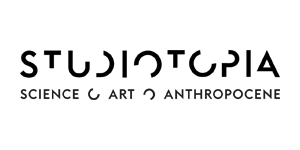Angesichts ihrer Vergänglichkeit bauen und schaffen die Menschen weiter (manchmal missbräuchlich), angetrieben von dem einzigen Ziel, etwas zu hinterlassen. Sollten wir Museen mit Objekten füllen und dann eine Industrie aufbauen, um sie intakt zu halten?
Beim Durchblättern meines Notizbuchs habe ich einige Skizzen von meiner letztjährigen Reise nach Letea, einem Dorf im Donaudelta, wiederentdeckt. Eine verlassene Hütte ist ein Futterplatz für ein Pferd. Die Häuser im Delta, die auf einer hölzernen Struktur gebaut sind, bestehen aus Schilf und Lehm. Auch das Dach ist aus Schilfrohr gefertigt. Das Donaudelta, ein Land mit rauen natürlichen Bedingungen und einem komplexen sozialen Kontext, erscheint wie eine trostlose, von Menschen verlassene Landschaft mit verfallenen Häusern, die sich in undefinierte, grasbewachsene Hügel verwandelt haben, die einem Grab ähneln.
Wie in Der kleine Prinz zeigt die Hutzeichnung (ein Hügel, ein Sandhaufen) einen Elefanten, der von einer Schlange verschlungen wird, oder ein Haus, das von einem Grab verschluckt wird. Es gibt keine Ruinen, keine architektonischen Spuren oder menschliche Eingriffe.
Vielleicht sollte das Kunstwerk ein ähnliches Leben führen wie der Mensch: Es wird geboren, es lebt und es stirbt.
In 2009, he represented Romania at the 53rd International Art Exhibition of the Venice Biennale. His works have been exhibited in SMAK Ghent, Centre Pompidou, Paris; Venice Biennale; Ludwig Museum, Budapest; Tate Modern, London; Contemporary Art Center, Geneva; n.b.k. – Neuer Berliner Kunstverein, Berlin; New Museum, New York.
Credits
This project was realised within the framework of the STUDIOTOPIA program at Cluj Cultural Centre with support of the Creative Europe Culture Programme of the European Union.
In 2009, he represented Romania at the 53rd International Art Exhibition of the Venice Biennale. His works have been exhibited in SMAK Ghent, Centre Pompidou, Paris; Venice Biennale; Ludwig Museum, Budapest; Tate Modern, London; Contemporary Art Center, Geneva; n.b.k. – Neuer Berliner Kunstverein, Berlin; New Museum, New York.





